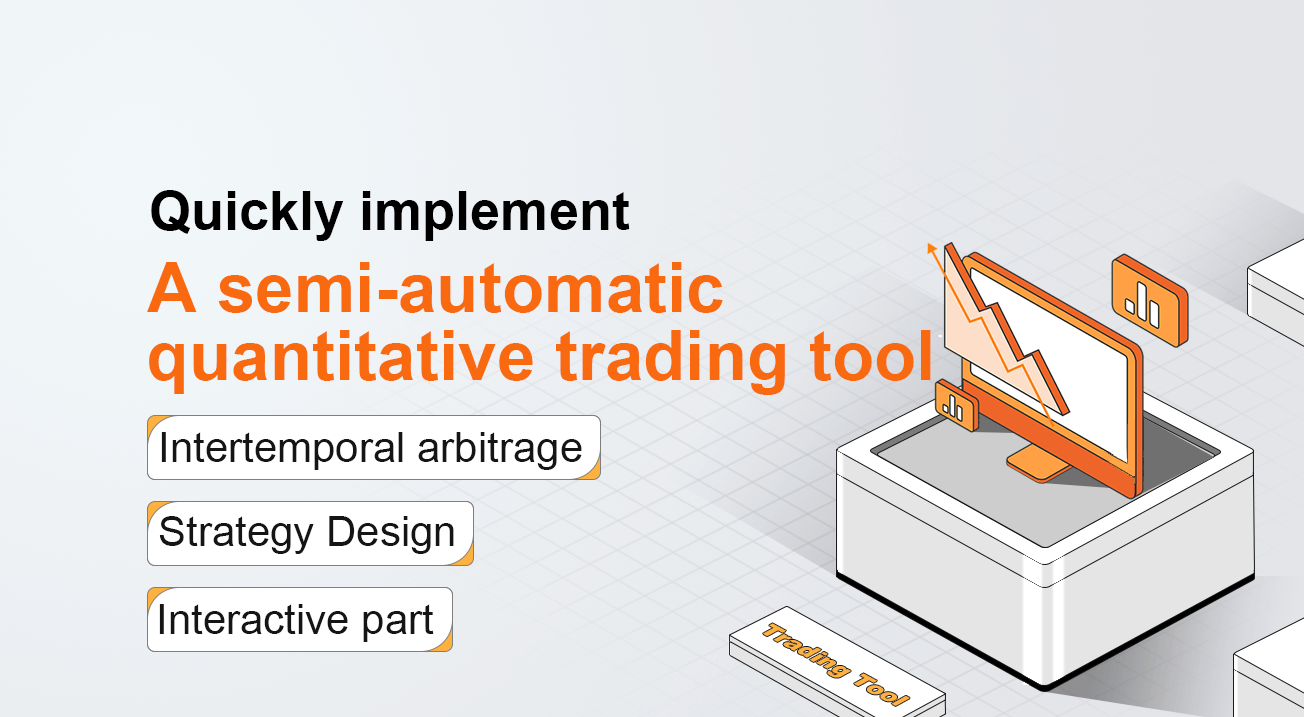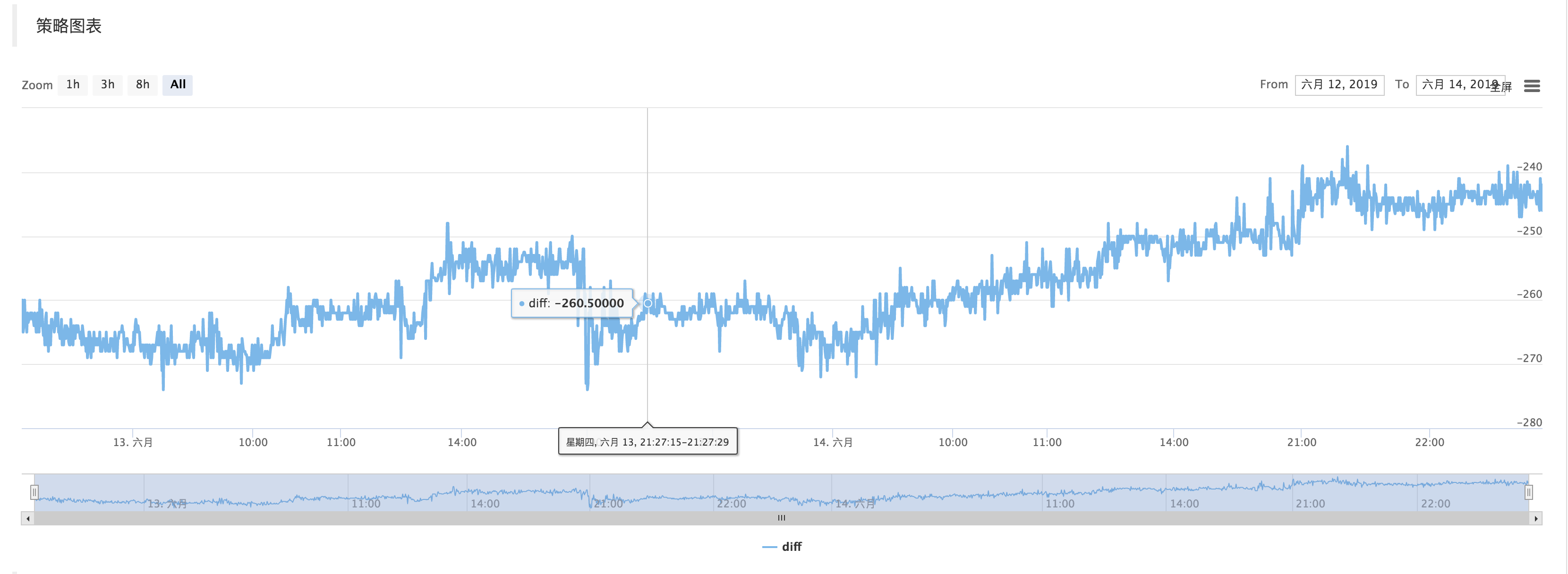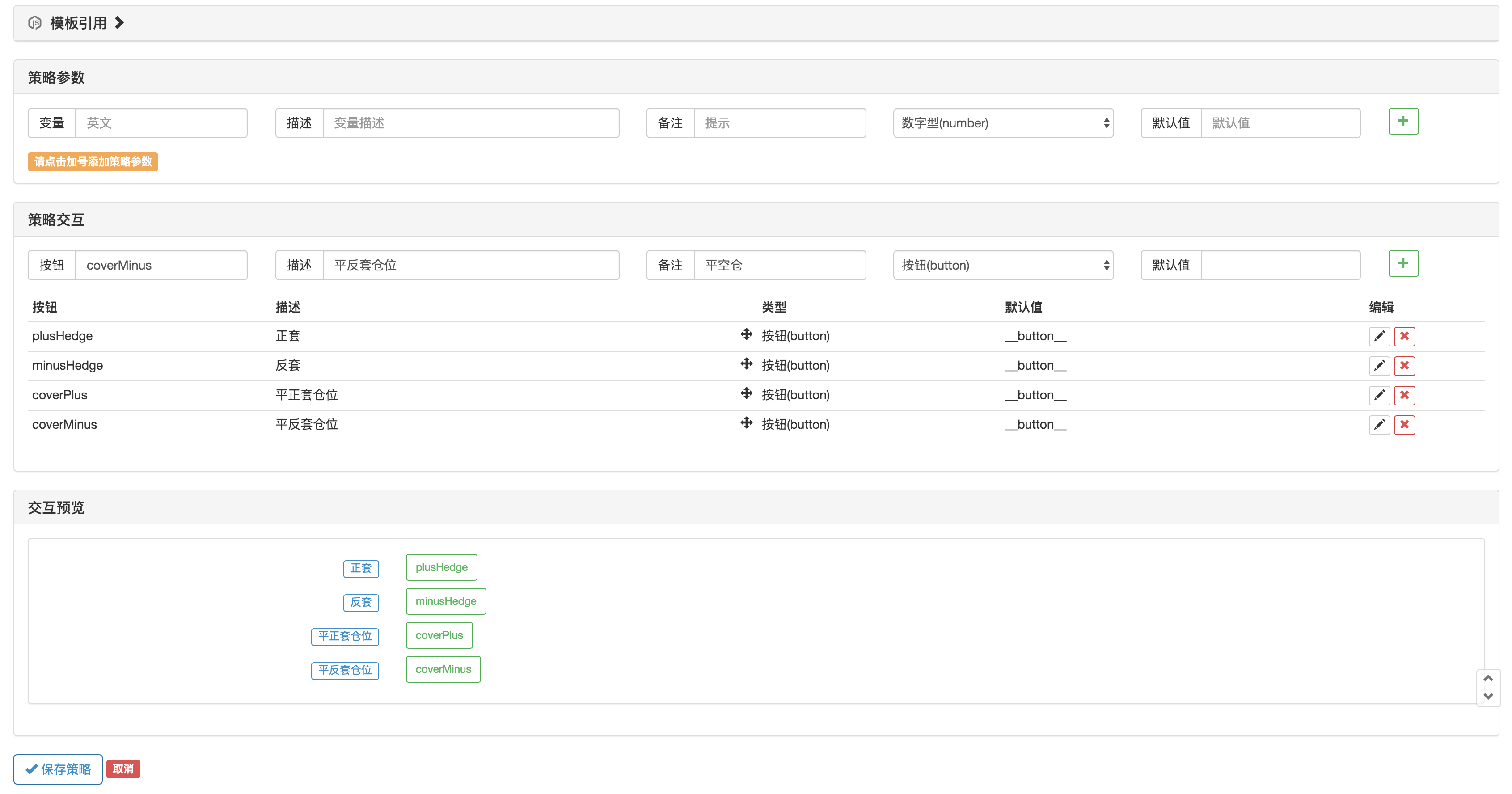Implementar rapidamente uma ferramenta de negociação quantitativa semiautomática
Autora:Bem-estar, Criado: 2020-08-30 10:11:02, Atualizado: 2023-10-08 19:54:06
Implementar rapidamente uma ferramenta de negociação quantitativa semiautomática
No comércio de futuros de commodities, a arbitragem intertemporária é um método de negociação comum. Este tipo de arbitragem não é livre de risco. Quando a direção unilateral do spread continua a se expandir, a posição de arbitragem estará em um estado de perda flutuante. No entanto, desde que a posição de arbitragem seja adequadamente controlada, ainda é muito operacional e viável.
Neste artigo, tentamos mudar para outra estratégia de negociação, em vez de construir uma estratégia de negociação totalmente automatizada, realizamos uma ferramenta de negociação quantitativa interativa semi-automática para facilitar a arbitragem intertemporal na negociação de futuros de commodities.
O foco deste artigo é sobre como construir estratégias semi-automáticas com funções interativas.
A arbitragem intertemporal é um conceito muito simples.
Conceito de arbitragem intertemporal
- Citação da Wikipedia
In economics and finance, arbitrage is the practice of taking advantage of a price difference between two or more markets: striking a combination of matching deals that capitalize upon the imbalance, the profit being the difference between the market prices at which the unit is traded. When used by academics, an arbitrage is a transaction that involves no negative cash flow at any probabilistic or temporal state and a positive cash flow in at least one state; in simple terms, it is the possibility of a risk-free profit after transaction costs. For example, an arbitrage opportunity is present when there is the opportunity to instantaneously buy something for a low price and sell it for a higher price.
Projeto de estratégia
O quadro estratégico é o seguinte:
Function main(){
While(true){
If(exchange.IO("status")){ // Determine the connection status of the CTP protocol.
LogStatus(_D(), "Already connected to CTP !") // Market Opening time, login connection is normal.
} else {
LogStatus(_D(), "CTP not connected!") // Not logged in to the trading front end.
}
}
}
Se o protocolo CTP estiver conectado corretamente, então precisamos configurar o contrato de negociação e, em seguida, obter a cotação do mercado.
Function main(){
While(true){
If(exchange.IO("status")){ // Determine the connection status of the CTP protocol.
exchange.SetContractType("rb2001") // Set the far month contract
Var tickerA = exchange.GetTicker() // far-month contract quote data
exchange.SetContractType("rb1910") // Set the near month contract
Var tickerB = exchange.GetTicker() // near-month contract quote data
Var diff = tickerA.Last - tickerB.Last
$.PlotLine("diff", diff)
LogStatus(_D(), "Already connected to CTP !") // Market Opening time, login connection is normal.
} else {
LogStatus(_D(), "CTP not connected!") // Not logged in to the trading front end.
}
}
}
Obter os dados do mercado, calcular a diferença, e desenhar o gráfico para registrar. deixe-o simplesmente refletir as flutuações recentes na diferença de preço.
Use a função de $.PlotLine

Parte interativa
Na página de edição de estratégia, você pode adicionar controles interativos diretamente à estratégia:

Use a funçãoGetCommandno código de estratégia para capturar o comando que foi enviado para o robô após o controle de estratégia acima foi acionado.
Depois que o comando é capturado, diferentes comandos podem ser processados de forma diferente.
A parte de negociação do código pode ser empacotada utilizando a função var q = $.NewTaskQueue()para gerar o objeto de controle da transaçãoq(declarada como variável global).
var cmd = GetCommand()
if (cmd) {
if (cmd == "plusHedge") {
q.pushTask(exchange, "rb2001", "sell", 1, function(task, ret) {
Log(task.desc, ret)
if (ret) {
q.pushTask(exchange, "rb1910", "buy", 1, 123, function(task, ret) {
Log("q", task.desc, ret, task.arg)
})
}
})
} else if (cmd == "minusHedge") {
q.pushTask(exchange, "rb2001", "buy", 1, function(task, ret) {
Log(task.desc, ret)
if (ret) {
q.pushTask(exchange, "rb1910", "sell", 1, 123, function(task, ret) {
Log("q", task.desc, ret, task.arg)
})
}
})
} else if (cmd == "coverPlus") {
q.pushTask(exchange, "rb2001", "closesell", 1, function(task, ret) {
Log(task.desc, ret)
if (ret) {
q.pushTask(exchange, "rb1910", "closebuy", 1, 123, function(task, ret) {
Log("q", task.desc, ret, task.arg)
})
}
})
} else if (cmd == "coverMinus") {
q.pushTask(exchange, "rb2001", "closebuy", 1, function(task, ret) {
Log(task.desc, ret)
if (ret) {
q.pushTask(exchange, "rb1910", "closesell", 1, 123, function(task, ret) {
Log("q", task.desc, ret, task.arg)
})
}
})
}
}
q.poll()
- Introdução à arbitragem de lead-lag em criptomoedas (2)
- Introdução ao suporte de Lead-Lag na moeda digital (2)
- Discussão sobre a recepção de sinais externos da plataforma FMZ: uma solução completa para receber sinais com serviço HTTP em estratégia
- Discussão da recepção de sinais externos da plataforma FMZ: estratégias para o sistema completo de recepção de sinais do serviço HTTP embutido
- Introdução à arbitragem de lead-lag em criptomoedas (1)
- Introdução ao suporte de Lead-Lag na moeda digital
- Discussão sobre a recepção de sinais externos da plataforma FMZ: API estendida VS estratégia Serviço HTTP integrado
- Exploração da recepção de sinais externos da plataforma FMZ: API de extensão vs estratégia de serviços HTTP embutidos
- Discussão sobre o método de teste de estratégia baseado no gerador de tickers aleatórios
- Métodos de teste de estratégias baseados em geradores de mercado aleatórios
- Novo recurso do FMZ Quant: Use a função _Serve para criar serviços HTTP facilmente
- Anúncios de estratégias de algoritmos de duplicação de opções binárias
- Em suma, por que não é possível mover os ativos da OKEX através de uma estratégia de contractual hedge?
- Pensamento sobre a movimentação de ativos por meio de estratégias de contractual hedge
- Visualize a política de edição para expandir a biblioteca de classes personalizada
- Solução para receber mensagens de solicitação de http enviadas por administradores
- Uso de servidores em transações quantitativas
- [Guerra dos Milênios] Taxa de troca de Bitcoin estratégia 3 hedge borboleta
- Estratégias de equilíbrio da lista de inscrições (estratégias de ensino)
- RSI2 Estratégia de reversão média utilizando em futuros
- Explicação da API de futuros e criptomoedas
- Introdução do indicador Aroon
- Estudo preliminar sobre o backtesting da estratégia de opções de moeda digital
- A diferença entre a negociação quantitativa e a negociação subjetiva
- Estratégia do canal ATR Implementada no mercado de criptomoedas
- Thermostat Strategy usando no mercado de criptomoedas por MyLanguage
- Hans123 estratégia de avanço intradiário
- Estratégia de opções de moeda digital retrospectiva
- Alarme TradingViewWebHook ligado diretamente ao robô FMZ
- Adicionar um despertador à estratégia de negociação
- Estratégia de cobertura de contratos futuros da OKEX utilizando C++